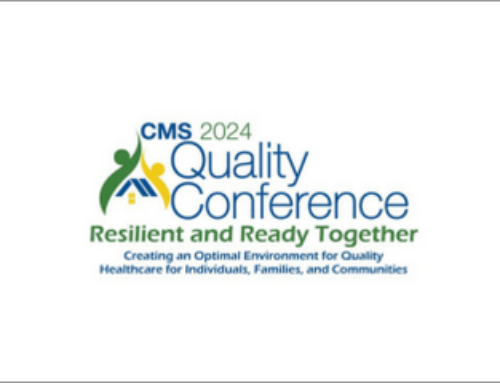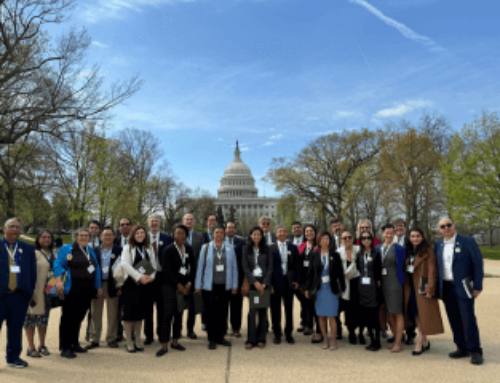Physicians will always prioritize patient needs, even when that means placing themselves at risk, as was the case during the darkest days of the COVID-19 public health emergency. When the nation needed health care providers, you were there. One thing we ask in return is that our nation reaffirm its commitment to health care providers, starting with embracing the American Medical Association’s Recovery Plan for America’s Physicians, which seeks fundamental changes to create a health system that better supports patients and physicians today and over the long run.
While the AMA Recovery Plan focuses on physicians, the AASM acknowledges that our member base consists of other qualified health care professionals, including psychologists, sleep technologists, and advanced practice providers, most or all of whom will also benefit from this recovery plan, as the Centers for Medicare & Medicaid Services (CMS) has consistently demonstrated in recent years that proposals will be impactful for all medical professionals and not just physicians. While the AASM encourages implementation of this Recovery Plan, we are also devising additional strategies for collaboration with both CMS and Congressional leaders to prioritize appropriate reimbursement for medical professionals, given the looming reductions scheduled for implementation in 2023.
The AMA’s Recovery Plan outlines a five-point strategy to strengthen our physician workforce, recover from the trauma of the pandemic, and improve health care delivery by eliminating some of the most common pain points that threaten to drive physicians from practice. The AMA’s comprehensive approach includes:
- Supporting telehealth to maintain gains in coverage and payment.
- Reforming Medicare payment to promote thriving physician practices and innovation.
- Stopping scope creep that threatens patient safety.
- Fixing prior authorization to reduce the burden on practices and minimize dangerous care delays for patients.
- Reducing physician burnout and addressing the stigma around mental health.
Each of these objectives is within our grasp, and achieving them will streamline health care delivery, improve patient care, and support innovation while simultaneously allowing us to respond more effectively to future public health emergencies. Let’s take a brief look at each component of the overall strategy.
Supporting telehealth expansion
The widespread adoption of telehealth services and technology throughout the pandemic allowed health care providers to serve patients’ needs in a comprehensive and cost-effective manner. The AMA and AASM are working to build upon that success by advocating for permanently eliminating pre-pandemic coverage restrictions, ensuring that physicians have the tools and resources they need to seamlessly integrate telehealth into their practices (e.g., see AASM Telemedicine Resources), and allowing patients to access telehealth services from any location.
Reforming Medicare payment
Diverting the Medicare physician payment system from its current unsustainable path and steering it instead toward practice sustainability will protect patient access to quality, evidence-based care while easing administrative burdens. When inflation in practice costs is considered, Medicare physician payment plunged 20% from 2001 to 2021. Medicare spending on physician services per enrollee retreated by 1% between 2010 and 2020, even as spending per enrollee for other parts of Medicare jumped by 3.6% to 42.1%. The AMA’s Recovery Plan tackles Medicare reimbursement by emphasizing simplicity, relevance, alignment, and predictability.
Stopping scope of practice creep
Patients rely on physicians to direct the care they receive, and the Recovery Plan presses AMA’s vigorous opposition to inappropriate scope of practice expansions. Ensuring the protection and well-being of patients in the modern health care environment is an AMA priority. While AMA believes physicians should lead health care teams, they acknowledge that each health care team member brings important skills to patient care, and all health care professionals made major contributions during the pandemic and continue to make major contributions now.
Fixing prior authorization
Prior authorization programs that insurers often use to deny care and increase their own profits have grown out of control. The AMA Recovery Plan will press the fight against this outdated process that delays necessary medical care and routinely causes patients to abandon treatment entirely, often with disastrous results. The AMA intends to improve prior authorization through multiple reform initiatives underway at both the state and federal levels, while offering physicians the resources and tools needed to slash the burden this process imposes on their practices.
Reducing physician burnout
Physicians struggled with professional burnout long before the pandemic pressed them to the very limits of endurance. Although each physician may experience burnout differently, the cause is nearly universal: An overly bureaucratic and burdensome work environment that steals time from patient care and finds physicians feeling powerless to advocate for change. The well-known resilience that physicians routinely display is not without its limits – but we know that a sizable percentage do not seek counseling or other help for anxiety, depression, or even suicidal ideation for fear of being judged by colleagues or having to disclose this action to a state licensing board. The AMA’s Recovery Plan includes action at the state and national levels to strip away outdated language on applications for medical licensing, health care sector employment and credentialing that promotes stigmatization of behavioral health care.
The AMA’s Recovery Plan for America’s physicians is ambitious, yet achievable. Prioritizing and meeting the needs of physicians will improve patient care and health outcomes. Working closely with all members of the Federation of Medicine, the AASM will work with the AMA to reach these goals and help fulfill both organizational missions: advancing sleep care and enhancing sleep health to improve lives, and promoting the art and science of medicine and the betterment of public health.
Updated Oct. 27, 2022








